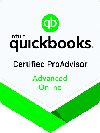When you become a sole trader, it’s important to understand your responsibilities, particularly when it comes to tax and finances.
As a sole trader, you are self-employed and run your own business. This means that you are responsible for your own tax and National Insurance contributions.
Here are six things you need to know when starting out as a sole trader:
1. You Need to Register as a Sole Trader
If you want to become a sole trader, the government needs to know about it.
Fortunately, registering as a sole trader is easy.
You’ll need to go to the HMRC website and sign up as a sole trader. You will then need to wait for a letter with your 10-digit Unique Taxpayer Reference (UTR) before you can set up your self assessment account.
Your self assessment account is the one you will use to submit your tax return and pay taxes each year.
When you are a sole trader, you are responsible for completing a tax return and paying the right amount to HMRC every year.
If you have filed a tax return online before, whether or not this was as a sole trader, then you will need to re-register. You can do this by filling out the CWF1 form, which again, you’ll need your UTR for.
It’s best to register as soon as you become self-employed, however the latest deadline is the 5 October after the end of the financial year during which you became a sole trader.
For example, if you became a sole trader on 1 August 2022, the latest you would be able to register is 5 October 2023.
You can be severely penalised for failing to register as a sole trader, so this is not a skippable step!
2. You Need to Keep Accurate Financial Records
As a sole trader, you need to keep detailed records of all of your sales and expenses. You won’t have to submit these when filing your tax return, but should you be investigated you will need to provide reliable proof of all of your activities – HMRC won’t just take your word for it.
Furthermore, it’s important to keep accurate records to ensure that you are paying the right amount of tax. If you fail to track all of your expenses, for example, then you may end up missing out on deductions and paying more tax than necessary.
Using a cloud accounting software is the best way to ensure that your financial records are accurate and up-to-date. Many software programs allow you to upload receipts on-the-go from your smartphone and can automate your invoicing for you to ensure that you know exactly how much money you’ve made. If you choose to work with us we will help you decide on the best option for your business.
3. You May Need to Register for VAT
If you have a turnover of £85,000 or above, you will need to register for VAT. This means you will have to charge your customers VAT on legible sales and then pay the VAT to HMRC. You will also be able to reclaim VAT that you pay on goods and services for your business.
Being VAT registered also requires you to sign up for Making Tax Digital for VAT. This means that you must use HMRC-approved accounting software to keep record of your VAT and submit your returns digitally.
VAT can be very complicated and easy to get wrong so do seek help.
4. You can Become a Limited Company
If your business really takes off or the nature of your operations changes, then you may want to consider registering as a limited company instead. There are numerous benefits for this, including greater protection from risk and potentially greater tax efficiency, depending on your expenses and turnover.
This is a complex area and you will need specialist advice to navigate the process or it could get costly for you longer term.
5. You Will Need to Pay Tax on Account
Whilst employees pay tax as they earn via their employer, being self-employed means that you are responsible for your own taxation. After the end of each tax year on 5 April, you must complete a self assessment form before the following 31 January.
If you owe less than £1000 in tax, then you will simply make a payment after completing your return.
However, if you owe more than this – as is often the case – then you will need to make two payments on account: 50% of your tax bill by midnight on 31 January, and another 50% by midnight on the following 31 July.
You will then need to make a balancing payment for the tax year by the following 31 January – so three payments in total. This can be a difficult thing to budget for, so make sure you put enough money aside each month to cover your tax bill.
6. Open a Separate Business Bank Account
When you become a sole trader, you will need to open a separate business bank account. This makes it much easier to keep track of your business finances and ensures that you don’t mix up your personal and business expenses.
Most banks offer free business banking for a limited time when you open an account, so shop around to see who offers the best deal. You may also want to consider an account with an interest-free overdraft facility to give you some financial flexibility in case of an emergency.
Final Thoughts
There’s a lot to think about when becoming a sole trader, but hopefully this guide has covered some of the basics. Just remember to stay on top of your finances, register for VAT if necessary and open a separate business bank account. However, it’s a small price to pay for the freedom and independence that comes with being your own boss, so don’t forget to enjoy the journey.







Leave a Reply